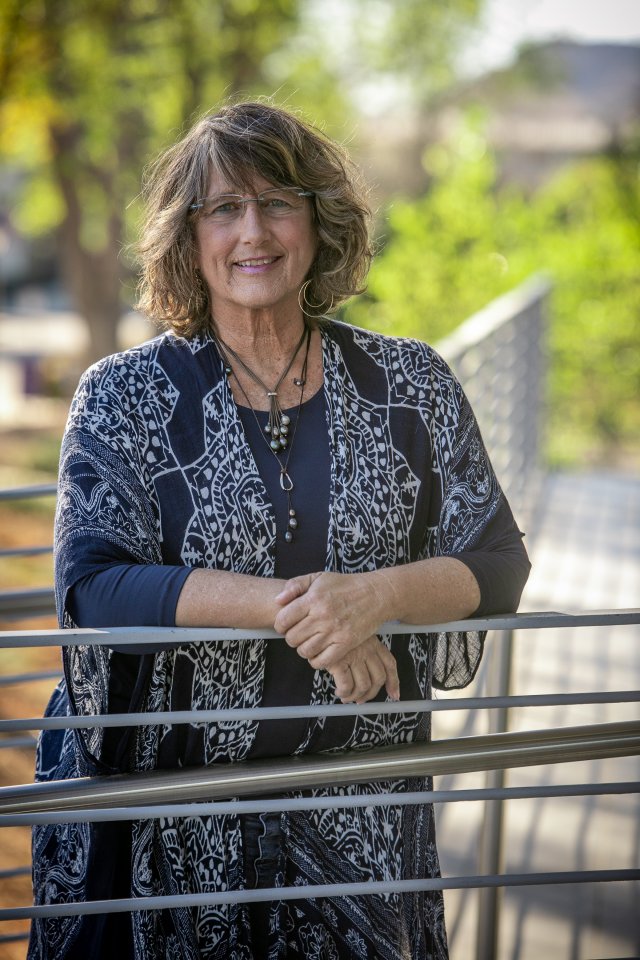A Lens on Equity
Associate dean and author aims to close gender equity gap in schools
Trudy T. Arriaga, associate dean of equity and outreach and Distinguished Educator in Residence in Cal Lutheran’s Graduate School of Education, served for 14 years as the first female superintendent of the Ventura Unified School District. In the recently published “Leading While Female,” she and co-authors Stacie L. Stanley and Delores B. Lindsey aim to help both female and male educational leaders close the gender equity gap in schools.
Why did you decide to write “Leading While Female”?
When 78% of the teachers in this nation are female, yet 24% of the superintendents are female, that’s a compelling piece of data.
As a superintendent, I had 18,000 whys — 18,000 students who were paying close attention to the decisions we were making as adults. I don’t have 18,000 anymore, but I have two: a granddaughter and grandson. Two is enough for me to make sure both of them look up and find women in roles of leadership and prestige and influence. As well as men.
What are some obstacles you have faced as a female education leader?
I think one of the challenges was the misperception of me as a woman in leadership.
Don’t confuse my greatest strength — that I am kind, caring, compassionate and sensitive — as a weakness. I wasn’t afraid to cry, to show my emotions, to say, “That kept me up at night.”
Another was people walking in the room looking for the superintendent, and not assuming that might be me.
Also, I did not have a network like men do. I would go to a conference, where there would be 100 superintendents, and maybe eight were women. The men networked — met for drinks at the bar, went golfing on Saturday. In my early years, I didn’t have a network of support.
In our research, we found that as women, we’re often our own worst enemies. Not only do we not network, but we have a tendency to say, “Pull up the ladder; I’m the extraordinary woman in the room and I like it” versus “I’m going to work hard to make sure I take the hand of other women, pull them up and bring them in.”
How do women lead differently than men?
I think women have unique contributions because our lens is different. It’s not a better lens, but it most definitely is a different one.
In my own career, for example, we were doing layoff notices during the recession. I had gone to every single individual teacher and handed the notice to them, and listened as they shared their anguish about the possibility of losing a job. It was not the easy way out.
I remember telling a colleague who happened to be a male just how exhausted I was by it. He said, “Why on earth would you do that? We just mailed them in the mail.”
I don’t want to stereotype and say that’s because he was a male and I was a female. But we definitely had a different style.
How important are mentors for educational leaders?
Research shows that mentors are critically important — certainly informal mentors, but formal mentors as well, selected and paid for to ensure that you have a person outside the organization who’s been successful in the role. I’m currently a mentor to two female superintendents in the state.
Of course we need male mentors, but we also need each other.
How can male educational leaders be allies, advocates and mentors?
Men in educational leadership can be very intentional about ensuring women have networks; and about processes, procedures and protocol in terms of how they impact women. They can recognize it isn’t just that women want a seat at the table, we want a voice at the table.
They can make certain there is no opportunity in the organization for gender bias, discrimination or harassment. And I’m not just talking about in the boardroom, but in the locker room. They can say, “We’re not going to talk about women that way.”
What kind of changes do you think are needed outside the workplace to help women succeed in leadership roles?
Gender equity is an opportunity to look at systems and procedures in our homes as well as in our communities and workplaces. If you listen to nursery rhymes, Jack was nimble and quick, and Georgie Porgie kissed the girls and made them cry. But Jill followed Jack up the hill, and Little Bo Peep lost her sheep. Those are formative nursery rhymes. It’s ever so subtle yet disturbingly intentional to woo our children to sleep with thoughts of what boys and girls do.
And then they get to school, and we assume the boys will build the Lego structures and explore science, but girls will participate in activities that don’t require technical, scientific or spatial skills.
We absolutely subject our children to gender inequities from day one. We don’t do it intentionally with bad hearts, but it’s an opportunity for us to think about what we do and say, and what our expectations are for our children.
We’re not talking only about binary boys and girls, female/male. We talk about the intersectionality and fluidity of the unique contributions of individual women in the LGBTQ+ community, women of color and women who are not of the majority faith community.
Can you share some of what you learned from talking to women of color and people from the LGBTQ+ community?
LGBTQ+ women spoke of not being able to share who they are as a woman within their school community, and the conflicts that presented.
Six percent of the superintendents in this nation are women of color. So there’s an additional “I’ve never seen you there, so therefore it’s hard to imagine myself there” barrier.
The research is very clear that if a child can look up and find themself, there is great hope.
